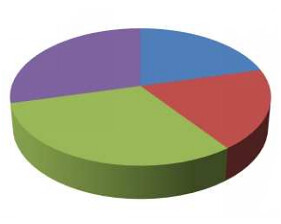The following excerpts provide comparison between steel and concrete industry-sponsored LCA studies.
From Modern Steel
Construction (Weisenberger 2010):
“In all but one category, the structural steel building outperformed the
concrete-framed building; the comparisons, expressed as percentages, are as
follows:
• Global warming potential: 9% less equivalent CO2 per sq.
ft
• Acidification potential : 8% less mol H+ equivalents per
sq. ft
• Eutrophication potential: 9% less kg N equivalent per sq.
ft
• Smog potential: 14% less kg NO equivalent per sq. ft
• Non-renewable energy primary demand: 1% more MJ per sq. ft
The only category in which steel lagged concrete was energy demand, and
only by one percentage point.”
The author goes
on to acknowledge:
“While the study did conclude that the steel-framed building had a lower
environmental impact in four of the five categories, it should be noted that
the differences in these categories did not reach a confidence threshold of a
15% difference to conclusively recommend one material over the other.”
Similarly, from a recent PCA-sponsored study (Masanet 2012) the author
concludes:
“Total
life-cycle GHG emissions in the baseline scenario are estimated at 14,350 Mg
CO2e for the steel framed building and 14,080 Mg CO2e for the concrete framed
building.”
The author
later states:
“.. for some climate zones the
superior option switched between scenarios, which suggests that the technology
options might play a key role in determining which option has lower life-cycle
GHG emissions in practice. For such instances, improved understanding and
modeling of regional and technological variations in materials pathways is of
particular importance for credible materials comparisons.”

















